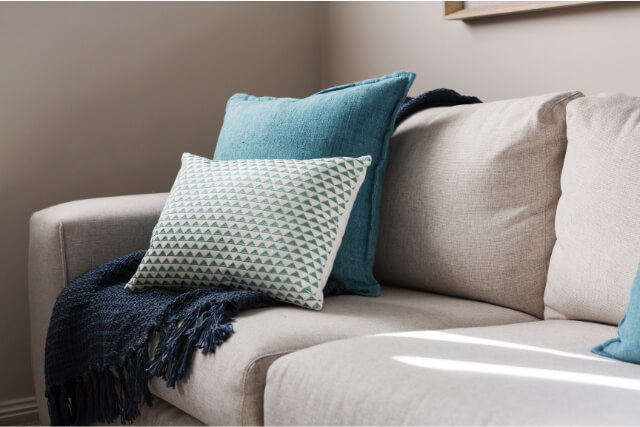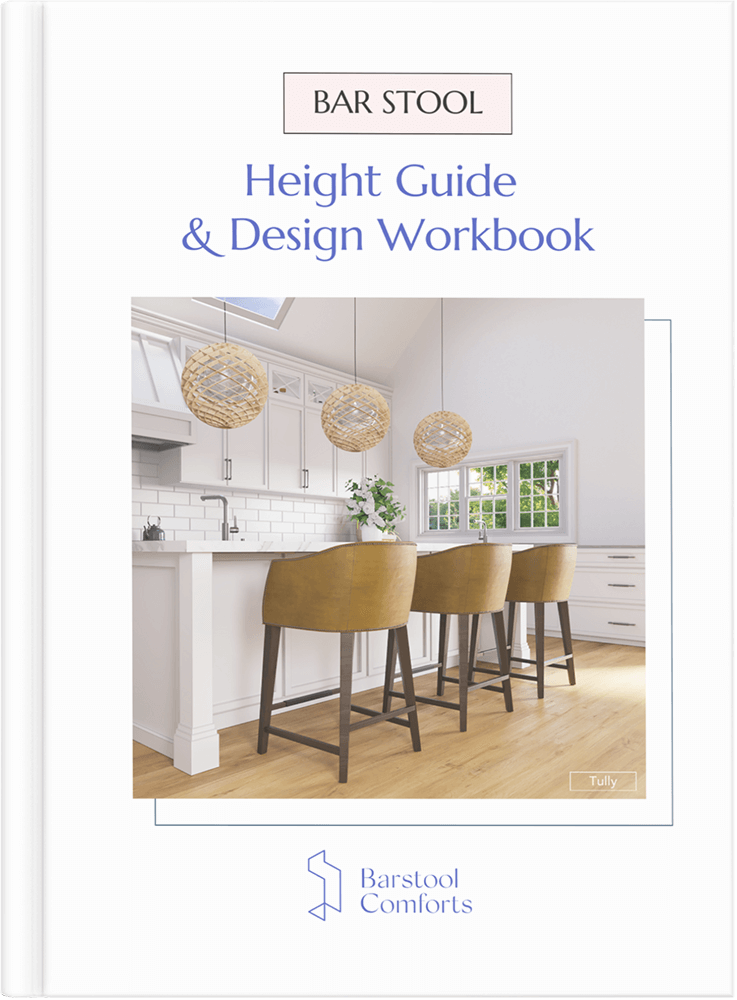Ever wondered why certain furniture colors draw us in? It goes beyond looks. Our choices are deeply personal, shaped by our backgrounds, stories, and emotional needs.
In this article, we’re going to explore in depth what your room color says about you, unraveling the meanings behind each hue and the personality traits they reflect.
Are you ready to learn more about yourself?
The Color Spectrum & Associated Personalities
Discover what color says about you with the following insights:
Calming Blue
Blue lovers are often tranquil, trustworthy, and reflective. You’re someone who values stability and calm in your life, always looking for growth and depth in your relationships and pursuits. You’re the rock in your circle, reliable and serene.
Refreshing Green
Green signals a love for renewal, nature, and balance. If this is your color, you likely enjoy rejuvenation and harmony, striving for personal growth. You’re energetic, down-to-earth, and appreciate life’s natural rhythms.
Bold Red
Red reflects a personality that is vibrant, passionate, and full of energy. Those drawn to red are confident, determined, and unafraid to take charge. You live life with intensity and embrace challenges head-on, inspiring those around you with your enthusiasm and leadership.
Playful Pink
If pink speaks to you, your personality is likely full of warmth, compassion, and a touch of playfulness. Pink lovers are often kind-hearted, affectionate, and deeply empathetic, radiating positivity and charm.
Majestic Purple
If purple is your color, you’re likely someone who embraces creativity, depth, and individuality. Purple lovers are often imaginative and open-minded, with a touch of mystery and sophistication. You appreciate the finer details in life and are drawn to space that inspire and intrigue.
Earthy Brown
Gravitating towards brown suggests you’re grounded, reliable, and value stability. You’re like the Earth, solid and reassuring, providing a strong foundation for yourself and others. You’re all about comfort and reliability.
Natural Beige
If you prefer beige, simplicity, calmness, and elegance might define your personality. You enjoy the finer things in life without the need for flashiness, finding beauty in minimalism and understated elegance.
Bright Yellow
Choosing yellow, you’re likely optimistic, creative, and full of warmth. You have a sunny disposition, always looking on the bright side and inspiring others with your creativity and zest for life.
Vibrant Orange
If orange is your go-to, you’re probably social, adventurous, and full of enthusiasm. You thrive in lively settings and enjoy exploring new horizons. Your energy and openness make you the heart of any gathering.
Sleek Black
Fans of black tend to be sophisticated, powerful, and enjoy modern elegance. You value strength and simplicity, making bold choices that reflect your commanding and refined personality.
Modern Gray
If gray is your choice, you likely appreciate balance and sophistication. You have a modern sensibility, with a keen eye for design and a preference for chic, timeless styles.
Pure White
Those who love white value cleanliness, simplicity, and clarity. You’re likely a minimalist at heart, preferring uncluttered spaces that reflect your desire for peace and fresh starts.
Creamy White
A preference for creamy white suggests you’re warm, inviting, and enjoy a cozy atmosphere. You’re approachable and love creating a soft, comforting environment that feels like a gentle embrace.
Multi-Color Combinations in Furniture: The Mixed Personalities

Combining different colors is a way of showing off all the different sides of your personality in one go.
From a bright red sofa to the chill-out calm of a blue armchair, every color choice is a piece of the puzzle that is you.
And when you start playing around with contrasting colors, that’s when things get really interesting.
Take note of the photo to the left to see which primary colors and secondary colors go together.
Cultural Interpretations of Furniture Colors
Ever noticed how the same color can mean totally different things depending on where you are in the world? It’s fascinating how cultures shape our perceptions and meanings of colors, especially when it comes to decorating our homes.
Red Across Cultures
For instance, take red. In many Western cultures, red is the color of love and passion, right? So, a red couch might be seen as a bold, romantic statement. But, head over to China, and red takes on a whole new significance – it’s the color of luck, happiness, and prosperity. A red piece of furniture in a Chinese home could be more about bringing good fortune than making a style statement.
The Meaning of White
Now, let’s talk about white. In a lot of places, white symbolizes purity and peace, making white furniture a go-to for a calm, clean vibe. But, in some Eastern cultures, white is traditionally associated with mourning and is used in funerals. So, a white living room set could carry a completely different connotation.
Green’s Varied Significance
And then there’s green. In many parts of the world, green is all about nature and growth, making it a popular choice for bringing a bit of the outdoors inside. But, did you know in some cultures, green can have a negative connotation, associated with illness or misfortune?
Tips for Choosing Furniture Colors that Reflect YOU!

Reflect on Your Emotions
Think about the colors that make you feel happy, calm, energized, or inspired. Do certain colors bring back memories or evoke strong feelings? This introspection can guide your furniture color choices.

Consider Your Lifestyle
Are you someone who loves to host and entertain, or do you prefer a quiet, serene home environment? Vibrant colors might suit a social butterfly, while calming hues could be perfect for a more tranquil personality.

Look at Your Wardrobe
Often, the colors you prefer to wear are the ones that make you feel the most comfortable and confident. Translating these colors into your home decor can help ensure your space truly reflects you.
Experimenting with Furniture Color

Start Small
If you’re hesitant to commit to large pieces of furniture in bold colors, start with smaller items like accent chairs, ottomans, or decorative pillows. This allows you to experiment without overwhelming your space.

Mix and Match
Combining different colors can add depth and personality to your home. Use a neutral base for larger items and inject color with smaller pieces. This strategy makes it easier to change things up as your preferences evolve.
Your taste in colors and what they signify about you may change over time. Embrace this evolution as part of your journey, allowing your home to reflect your current self without being tied to past choices.
How to Pick Colors for a Room
Selecting the perfect palette for your space can be a daunting task, but understanding how to choose room colors can transform any area from ordinary to extraordinary.
Consider the Room’s Purpose
Choose colors based on the function of the room. Soft, calming colors for bedrooms; vibrant, energizing hues for living spaces or home offices.
Start with a Mood Board
Collect images, fabric swatches, and paint chips that inspire you. Seeing all your ideas together can help narrow down color choices that reflect your style and the room’s vibe.
Think About Lighting
Natural and artificial lighting can dramatically affect how a color looks. Consider the light sources in your room when selecting colors to ensure they look as intended at different times of the day.
Play with Color Psychology
Familiarize yourself with how different colors can influence mood and behavior. For example, blues and greens tend to be calming, while reds and yellows can be stimulating.
Use the 60-30-10 Rule
For a balanced color scheme, distribute colors in the following proportions:
- 60% dominant color (walls)
- 30% secondary color (furniture)
- 10% accent color (accessories)
Experiment with Samples
Before committing to a color, buy sample pots of paint to test on large sections of the wall. Observe how the color changes in different lighting conditions throughout the day.
Consider Color Flow
Think about how the room connects with adjacent spaces. Choosing harmonious colors can create a sense of flow and cohesion throughout your home.
Reflect Your Personality
Make sure the colors you choose resonate with you personally. Your home should be a reflection of your unique style and preferences.
Don’t Forget the Ceiling
Consider the ceiling as a fifth wall. A lighter shade than the walls can make the room feel larger and brighter, while a darker color can create a cozy, intimate feel.
Balance with Neutrals
If you’re opting for bold wall colors, balance them with neutral furniture or vice versa. This approach keeps the room from feeling overwhelming and allows for easier updates later.
Your Ongoing Journey to the Perfect Palette
Remember, the journey to finding the perfect color palette is ongoing and ever-evolving, much like our personalities. As you grow and change, don’t be afraid to experiment with new hues or mix and match to reflect the many facets of your character.
Here’s to creating a home that’s as vibrant, nuanced, and extraordinary as you are.




